|
|

Your download link is at the very bottom of the page... always. |
Processed through Paypal No account required. |
Buy our over-priced crap to help keep things running.
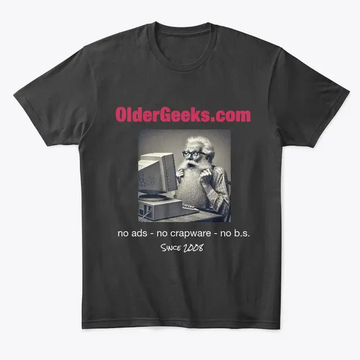









|
|

Your download link is at the very bottom of the page... always. |
Processed through Paypal No account required. |










| Files | ||||
| File Name | Rating | Downloads | ||
| ChurchInfo v1.3.0 ChurchInfo v1.3.0 Free Web-Based Church Management Database Software. ChurchInfo is a free church database program to help churches track members, families, groups, pledges and payments. Our feature set is comparable to expensive church management software packages. Our users are supported by an open-source community of people who volunteer their time and energy to make this technology available to all churches. Features Naturally Networked ChurchInfo runs on any server that supports PHP and mySQL. The server may be in-house or at an ISP anywhere on the Internet. Any number of people may access the database simultaneously. Family A family is a group of people who are treated as a unit. The obvious example would be a married couple and perhaps their children. The family members do not need to have the same last name, but they should live at the same address to receive newsletters and financial statements. Pledges and payments are tracked by family. Some churches call a Family a “Pledging Unit”. Person A person is an individual associated with the church. A Person can be a member of a Family, and a person can also be a member of one or more Groups. A Person has individual contact information, such as a cell phone number and an email address. A Person also has a relationship with the church as “Member”, or “Guest”. Group A group is a collection of people, such as the choir or the stewardship committee. Groups have many uses. Here are a few ideas: committees, church school classes, covenant groups, baby sitters. The possibilities are endless. ChurchInfo makes it easy to contact all the members of a group by letter or email. Pledges and Payments Pledges and Payments are tracked for each fiscal year, with automated support for reminder letters. There is also automated support for generating donation acknowledgement letters for tax ... |
 |
5,550 | Oct 23, 2019 Churchinfo 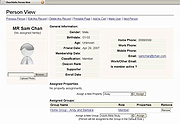 |
|
| DirList v1.3.0 DirList v1.3.0 Tool for directory listing creation. Free application that allows to browse all connected disks in Explorer and select folders and files for listing. Files can be listed by content too. Resulting listing can be saved to CSV file or as HTML with defined layout with preview. Supported operating systems: Windows 2000 Windows XP Windows 2003 Windows Vista Windows 7 Windows Server 2008 Windows 8 Windows 8.1 Windows 10 Windows 11 Free to use for both private and commercial users. Click here to visit the author's website. |
 |
5,639 | Jan 05, 2025 MiTeC 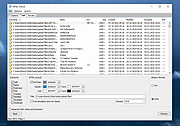 |
|
 |
Hidden Windows 7 Features v1.3.0 Hidden Windows 7 Features v1.3.0 Many useful features in Windows 7 are hidden. These features can be enable by editing Windows registry. Manual editing of registry is long and not so easy process. With Hidden Windows 7 Features are hidden features available with one click. Supported OS: Windows 7 Platform: 32bit, 64bit SHA256: b7d730b5e2688a7f1f93a9ed7cb4a9885aca407f5ae066f4ad6dc2fd9ad4f3af 1.3.0 (24/08/2018) added - Hide drives from your computer added - Taskbar thumbnail delay time added - Taskbar thumbnail live preview delay time added - Pin folder to Start menu added - Disable SMB1 protocol added - Disable SMB2 and SMB3 protocol added - Enable write protection for USB drives fixed - Turn off thumbnail live preview minor bug fixes Click here to visit the author's website. |
 |
5,151 | Dec 05, 2019 Theropods Ltd 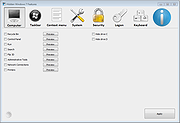 |
| ImageSleuth v1.3.0 ImageSleuth v1.3.0 Images, hidden inside images, revealed. An enhanced free retroReveal replacement. ImageSleuth is a free replacement for the widely used retroReveal. It provides the same forensic-style image processing based on the algorithms listed on the archived retroReveal Glossary page. It also includes several enhancements and refinements. From the author: For some years, the retroReveal website hosted by the University of Utah facilitated "the collaborative discovery of hidden content in documents, manuscripts, music, and artifacts". By separating an image into its component color channels various transformations could be applied to retroactively reveal hidden elements that would otherwise be barely visible to the naked eye. retroReveal was popular with researchers in several fields, particularly philatelists who found it especially helpful when trying to isolate postmarks and stamp cancellations. Unfortunately, retro Reveal went offline in May 2022 and seems unlikely to return. Supported operating systems: • Windows (7 and newer) • macOS (10.15 and newer) • Linux (64 bit) Changes: v1.3.0 June 2024 New: Colour erase and replace tool for selectively removing or replacing colours in an image. New: RGB colour filter tool. New: Images may now be saved to a file or copied to the clipboard in all views. Either by means of a toolbar button or right-click menu. Change: Removed duplicate tranformations from the retroReveal tool. Bug fix: Images containing an 8-bit indexed palette are now processed correctly. Installing: Windows • Download and then execute the installation program ImageSleuthSetupV1.3.0.exe • Follow the prompts to install ImageSleuth • After the installation has completed, double-click on the ImageSleuth icon to launch the application macOS ... |
 |
71 | May 17, 2025 Clive Levinson  |
|
| Process Governor v1.3.0 Process Governor v1.3.0 A free utility to automate Windows process and service management. Process Governor is a Python utility that automates the management of Windows processes and services by adjusting their priorities, I/O priorities, and core affinity according to user-defined rules Features • Adjust process and service priorities for better performance. • Control I/O priorities to optimize resource utilization. • Define core affinity for processes. • Fine-tune Windows services and processes based on user-defined rules. Getting Started To get started with Process Governor, follow these steps: • Download the latest ready-to-use build from the following link: Latest Release. • Run the Process Governor.exe executable with administrative privileges. • Configure the rules for processes and services. • Optionally, enable auto-start for the program to launch automatically with the system. You can close the program by accessing the tray icon. Note: This file has two hits on VirusTotal. We have confirmed these to be false positives. The file is safe. Click here to visit the author's website. |
 |
183 | Sep 24, 2024 System X - Files 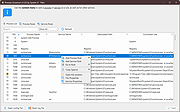 |
|
| Showing rows 1 to 5 of 5 | Showing Page 1 of 1 | 1 |
OlderGeeks.com Copyright (c) 2025